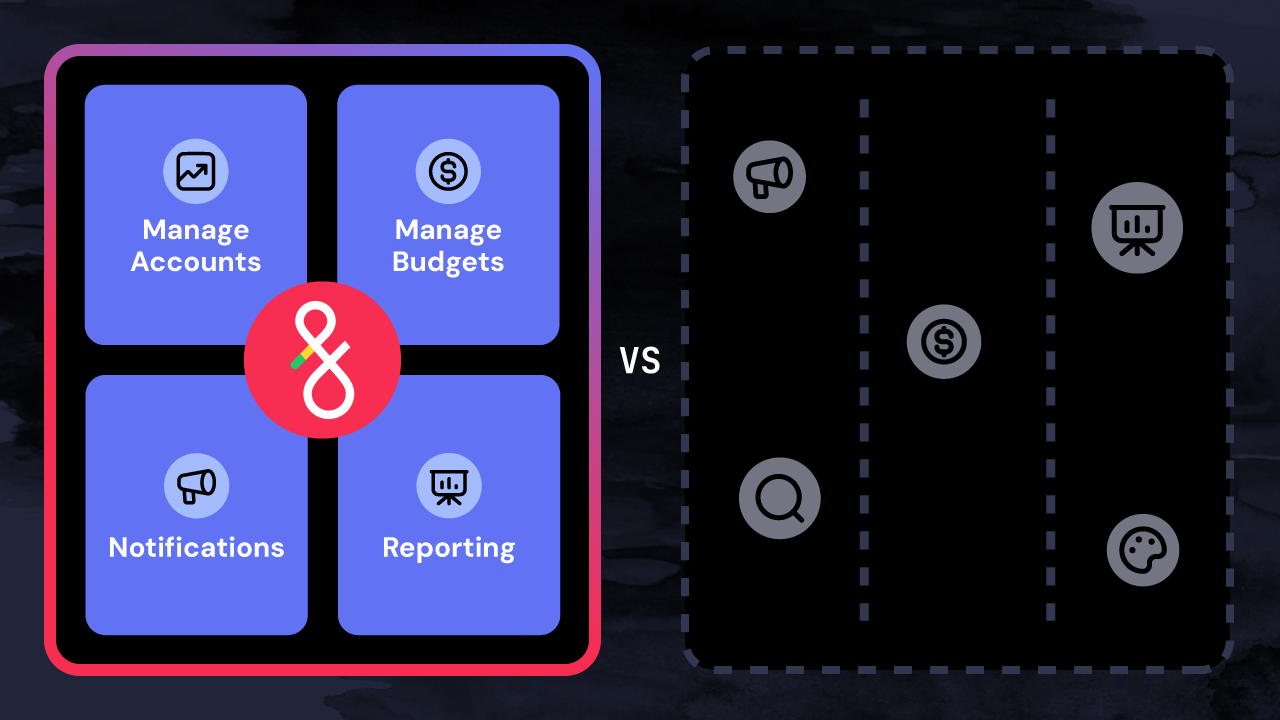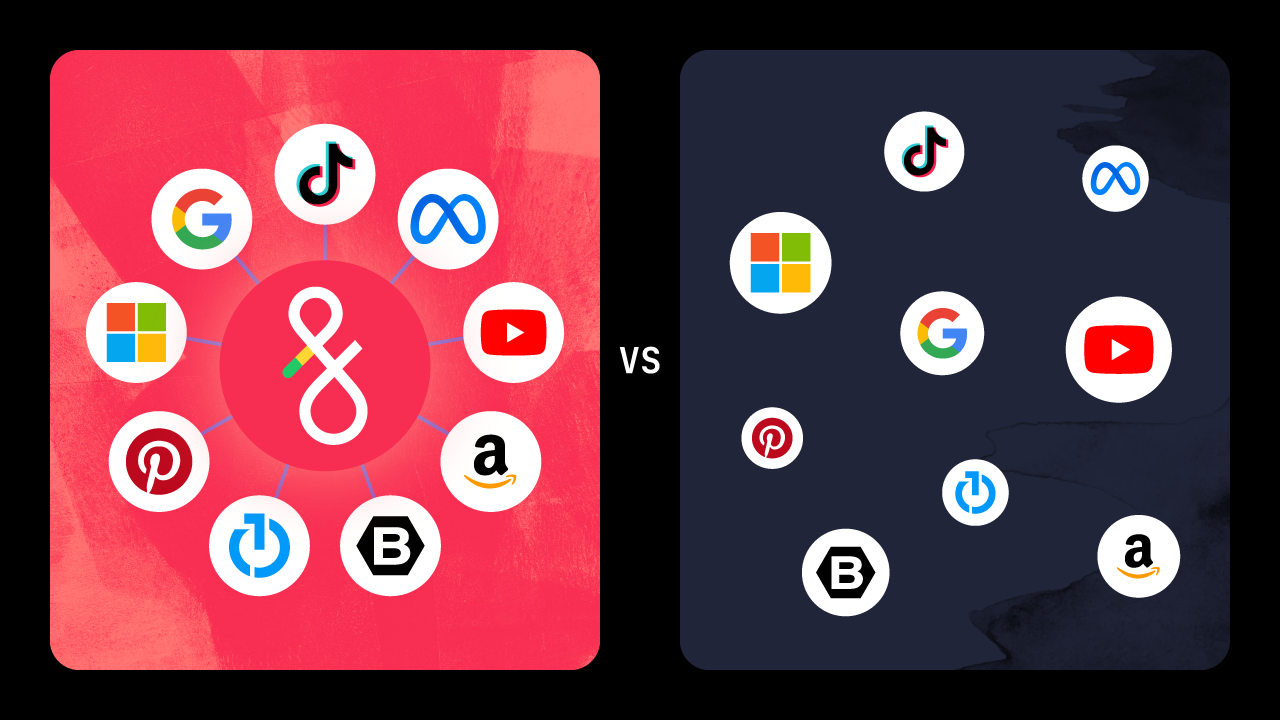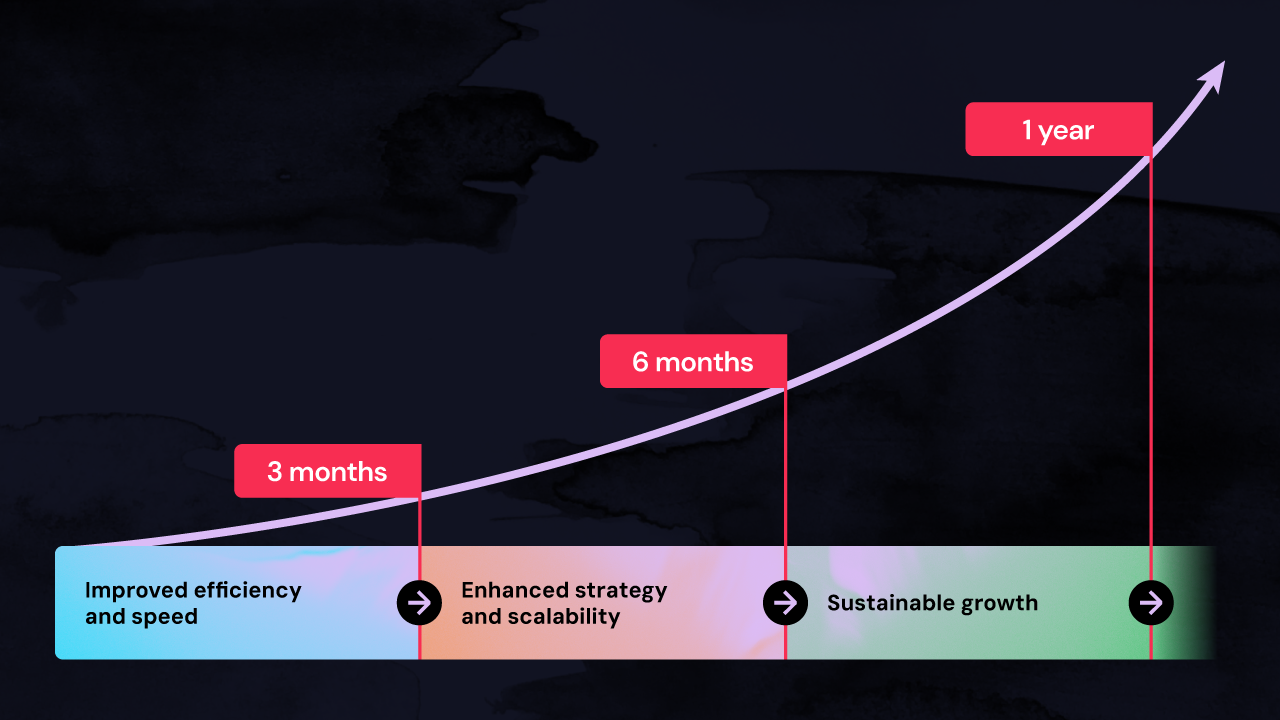As we approach 2025, automation is rising to the top of the must-have tools for digital advertising agencies. Automation offers a pathway to improvements in performance and retention (both employees and customers) by streamlining workflows, reducing burnout, and bringing joy back to digital advertising.
In this article, advertising experts share five strategic ways automation can transform your agency's operations and drive success in the coming years. Keep reading to discover how these automation strategies can help your agency thrive in an increasingly competitive market.
Audit where teams spend the most time
Heather Chevalley, VP of Growth at Fluency, states that advertisers need their strategists, who are “glorified task masters today, to actually be strategists…[They need to] focus on improving the advertising and not managing the advertising.”
Curious about where you should start? Take a look at where your team is losing the most time. For most advertisers, the most time-consuming tasks are related to budging, reporting, and campaign launching/management activities.
Eric Mayhew, CPO, co-founder, and President at Fluency, suggests figuring out where process workflows are interrupted by human intervention. This is another area where automation typically provides teams with valuable time savings.
"Think about having singular tools,” said Mayhew. “The lowest hanging fruit for us to save time is to not have multiple logins, so we’re not creating campaigns on Microsoft and Google and Meta. Instead, you can have a philosophy, build your core campaigns, understand your goals, and distribute those things."
Automate low-value tasks to generate high-value impact
Once you’ve audited your team’s biggest time sinks, think critically about the right processes, steps, or workflows to kickstart your project.
Ben Gilbert, Senior Director of Advertising Innovation at Dealer.com, discussed his team’s goals and initial use cases with leadership before adopting automation technology.
“We really wanted to improve [employee] job satisfaction by allowing automation to do a lot of their low-value actions,” Gilbert said during a live panel discussion at Advertising Week New York 2024. “One of our core goals is to automate all low-value actions so the team…can have more client conversations and more high-value impact to their accounts and portfolio."
Gilbert knows that automating repetitive and low-value tasks delivers multiple advantages for him and his team.
For starters, removing the most tedious and mundane tasks from your employees’ plates can enhance job satisfaction. According to Statista, the marketing and advertising industry had a worldwide burnout rate of 69.6% in 2019. Opening up more opportunities for high-impact work, like client interactions or strategic optimizations, can help reduce employee attrition. Retaining your best performers will always be more effective than continuously filling a revolving workforce door.
Secondly, as your team engages more with customers, you’re more likely to improve customer satisfaction and retention. This eases the pressure on your sales team, reduces onboarding pains, and stabilizes your company’s cash flow. You can create a loyal customer base that will keep coming back for more.
"One of our core goals is to automate all low-value actions so the team, the end users, can have more client conversations and deliver more high-value impact to their accounts and portfolio,” confirmed Gilbert.
Automation also generates more capacity for strategic and creative work: two areas that are the most difficult to focus on when cumbersome, disconnected processes or tools inhibit teams from doing their best work.
Prioritize portfolio updates with a “coffee cup” dashboard
New channels and formats open up new opportunities, but it’s difficult to act upon new possibilities if you’re stuck in the “old days of using spreadsheets,” as Gilbert puts it.
“Our world lives in ratios: the number of accounts or portfolios assigned to a single resource,” said Gilbert. “Anytime we're adding more features, more capabilities, or more channels, it just adds more work. And across a ratio, you're just multiplying that across the board.”
Gilbert cites automation as a critical solution for addressing these complexities while enabling his team to work faster and smarter. With automation, you can manage campaigns across Google, Meta, DSPs, and other channels more efficiently without adding headcount.
For example, Gilbert and his team built an automation-powered “coffee cup” dashboard. This dashboard pulls in all the relevant information an ad strategist needs to organize their morning.
Gilbert says the dashboard shows each strategist what needs to be fixed or what needs attention “the first moment of the day,” as they drink their first cup of coffee. This saves the team valuable time as they don’t have to “find something that’s broken” because the dashboard puts the most vital information directly in front of them.
“The rest of the day, they can start working on more strategic things,” Gilbert continued. “New channel opportunities, more budget, conversations…it's a lot more fun to do more strategic work and not just cutting and pasting and fixing things.”
Get back “thousands of hours” by automating client reporting
Gilbert also mentioned that using automation and AI to create campaign performance reports was immensely valuable in saving his team “thousands of hours” in working time. Building personalized reports for every single customer was a huge time-suck for his team.
Now, Gilbert and his team can generate personalized PowerPoint reports that include “all account-specific information, with trends and graphs,” and the most valuable data points uncovered by AI analyses—all with one click. These personalized reports offer each of the agency’s customers a comprehensive narrative that highlights the month’s performance results and the value delivered by Gilbert’s team.
“If anybody's done this job before, 50% of our time is managing campaigns and the other 50% seems to be justifying what we did to clients,” said Mayhew. “We’re telling them what, why we did it, that we did a good job, all those types of things. That can take a lot of time in its own right.”
In other words, these automated reports enhance the customer experience while emphasizing the agency team’s valuable work. Gilbert and his team no longer have to justify their work to clients: they simply click a button and get back to doing their best work.
Ensure compliance by automating best practices
If it is possible to build a decision tree around a strategy, then it is possible to automate it.
With the ability to set triggers and conditions for different actions, automation can be tailored to meet the specific requirements of any of your team’s projects or tasks. This means you can have a personalized automation system designed around unique operations and workflows.
Mayhew points out that automation can take “a lot of the things that [your strategists] would do, the decisions they would make, and make it so the computer does it.”
This provides immense value for agencies that work with regulated industries, such as healthcare, pharma, housing, or financial industries. The ability to tailor decision trees and automation rules to specific circumstances or client needs significantly enhances the effectiveness and compliance of advertising strategies.
Once set up, automation safeguards against accidental non-compliance. Automation rules offer the flexibility businesses need to protect their interests and execute strategies seamlessly, thereby enhancing accuracy and efficiency.
"There are components within an automation platform that you can structure around regulatory things,” said Mayhew. “What ends up happening is you don't fall into them accidentally anymore. Once you get your automation set up to be protective of those components, it becomes much more patentable and easier to get it right the first time."
Guide your agency’s growth with confidence and clarity
As the digital advertising landscape continues to evolve, automation is a necessity for agencies aiming to stay competitive and efficient. By implementing the strategies discussed in this article, your agency can boost employee morale while simultaneously delivering exceptional client results.
With a solid automation framework in place, your agency will be better equipped to handle the ever-changing regulatory environment and achieve sustainable growth. Prioritizing efficiency through automation will benefit your agency's bottom line and give you a competitive edge entering 2025.
To learn more about automation strategies to improve ad agency retention and performance check out this video.






